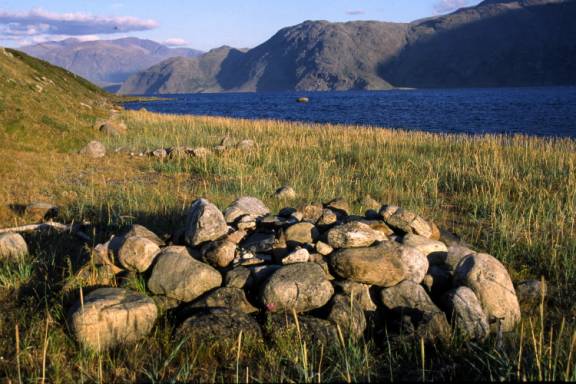Close Encounters of the Fuzzy White Kind
Well, it was only a matter of time until I experienced my first polar bear encounter. Alfred had arrived in Nachvak 18 days ahead of me and had seen a single polar bear on several occasions. It seemed to be the resident fiord bear, predictably visiting the north shore where we were camped, every few days. This fella had gotten comfortable enough with Alfred‘s presence to ‘ring the door bell’ at night – ie come close enough to the tent to break the alarm wire. Luckily, on all occasions, the bear had retreated. Base camping gives resident or local wildlife a chance to get used to us and in exchange, we can observe their behavior, under somewhat natural conditions. Since I had arrived however, the bear had not been seen for several days and Alfred wondered if he had moved on.
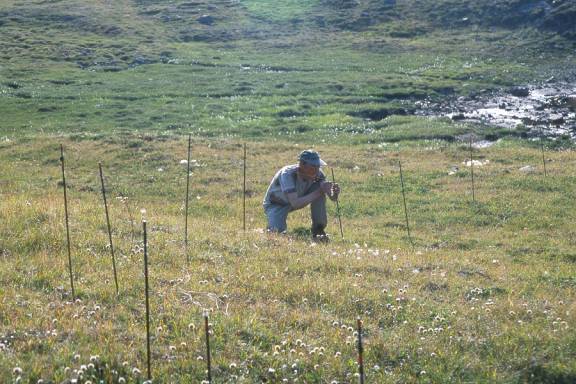
Although I had been in Labrador two summers previously (see trips reports for 1997 and 1999), my only polar bear encounters had been from the relative safety of a boat. One trip was mostly inland and the other was further south where bears are less frequent. Alfred had warned me that it was likely we would be ‘visited’ and I should be prepared. Our loaded shot gun and laser light were part of the evening ritual, ready and waiting just outside the tent. According to Alfred, who has traveled up and down this coast since 1981, day time encounters were relatively safe, bears saw us, we saw them and encounters were generally avoided. However, it was during the night when nothing moved that the bears became bold, curiosity overtaking them as they risked approaching an unknown lump (ie stinking humans in a nylon tent).
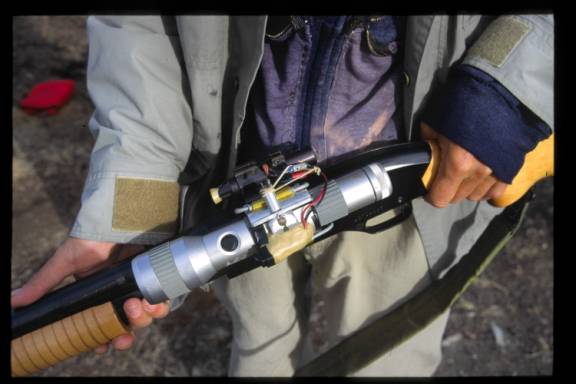
It happened like this: on a cool rainy day, with peaks and distant views obscured by fog and cloud, I wander around the slopes, inspecting at the micro level: still tiny, blue berries, purple black crowberries with short stubby leaves, bullet hard pink lingon berries, partridge berries. All were in various states of unripeness, being early in the season.
The weather was worsening, mist turned into drizzle, winds gusting with sharp slaps. Alfred returned to camp to cover some gear, I returned feeling peckish. After a snack and cup of tea, we decide a beach fire would be a suitable cold weather activity. Gathering beach wood, out of the corner of my eye, I notice a white blob in between some large rocks, about 300m away. Instantly, I know it’s a bear – the size, the colour, the shape is unmistakable – and frantically wave at Alfred to come look, not daring my voice to speak, doubting my voice would carry in the gusty wind. Yes, indeed, Alfred smiles and then takes off to the tent to get his tripod and camera. Heck! Not the reaction I expected but nonetheless, I stick like glue to his side: he has the gun.
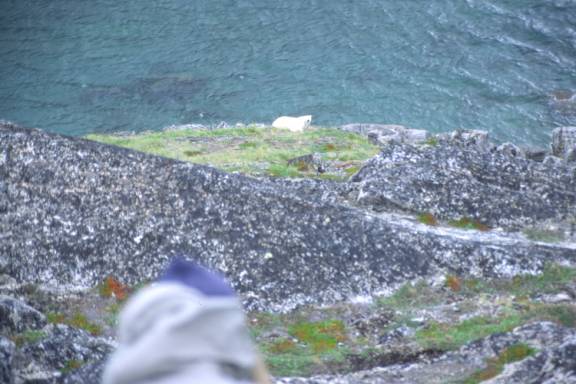
We return to the rocky knoll where the bear was last seen. There, below at the waterline, the huge body motionless, the head with the black felt tip nose swivels and twists in the strong wind. Smelling seals? Smelling us? As of now we are not visible – but then we deliberately show ourselves. The bear (now I think it’s a female due to the narrow muzzle shape) looks intently at us – my heart pounds! With an effort, she heaves her body up and positions herself to get a better look at us. We are completely still, bracing ourselves against the wind. She lays down, head on crossed front paws but her eyes never leaving us. After a few minutes, she abruptly rises and rubs her rear end against a rock, her fat belly, jiggling from side to side. It would be comical if I wasn’t so petrified. One long look at us, then she plunges into the ocean. With the clear water and from my perch above, its obvious that this is a water animal : despite the huge surf, she’s a fantastic swimmer, those huge front paws scooping water at a leisurely pace, body buoyant at the surface. We try to keep pace with her, following the best we can at the top of the ridge but eventually she out paces us and we lose her. Two hours have passed, I didn’t even notice the winds blew out the grey, leaving a dramatic pink sky, a fitting conclusion to a dramatic day!
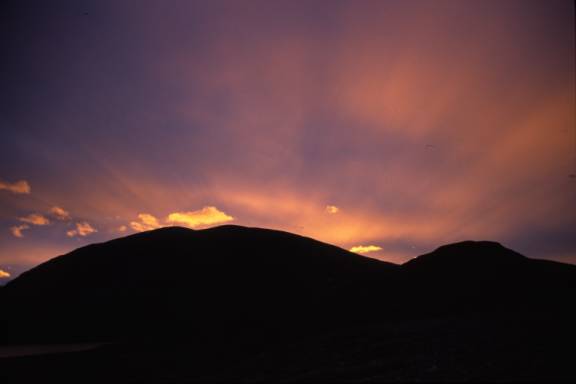
A morning dawns to the promise of clear skys and gentle winds. We have been waiting for stable weather to continue on our boat explorations. Directly facing camp, about 3 km across Nachvak fiord is the Tallek arm. Our telephoto camera lenses have peeked down this enticing steep sided valley, giving hints of ancient geological times. By 11am, we are packed and on the water.
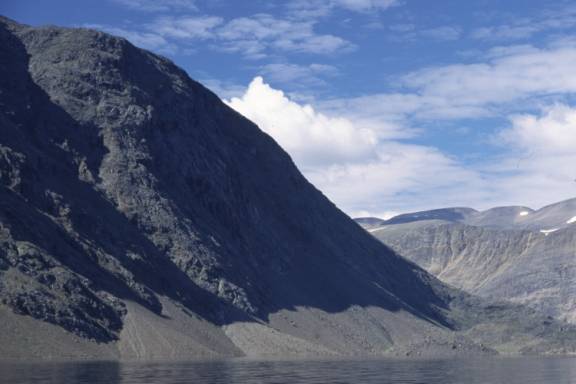
It’s a rare, perfectly calm early August day – the boat wake creates Dali-like reflections, mixing elements of water and earth. Seals, curious as to the motor noise, surface and then spy hop, inspecting our craft. A few puffy clouds hang motionless far down the valley. Eroding multi hued mountains crumble into scree that plunge below the oceans surface. Blue sky, calm waters, pleasant temperature have conjoured a completely different atmosphere compared to the foreboding Tasiuyak arm, just around the corner. With an extended stay in one location, the depth of moods becomes apparent.
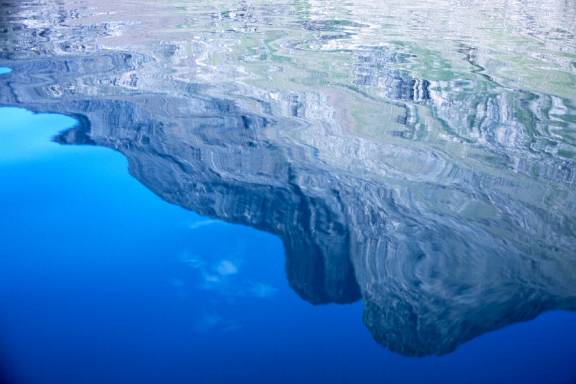
Beaching the boat, a legless caribou skeleton greets us as well as the usual seal jaws. We start to climb up the steep slopes which are thick with ripe crowberries. Stooping to scoop a few, as well as pause and catch my breath, a young black bear suddenly bursts from the nearby willows and charges off down the slopes, full tilt, away from us. With an eventual kilometer distance between us and him, he slows down, turns and looks before pausing at the shoreline. He seems to be heading for the boat. After a short debate, we head back, as bears have been known to chew rubber gas hoses.
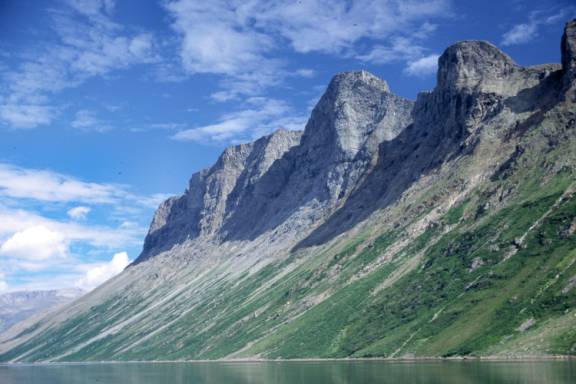
As the weather is still favourable and the gas tank full, we detour along Nachvak’s north shore to ‘the tall bride’…a waterfall with veil like qualities as it plunges directly into the ocean. Dropping anchor, its time for a floating lunch. Down below, starfish, sea urchins and different kinds of jelly fish are latched onto the rock bottom. The clarity of the water is astounding, matching the calm winds which have lasted all day. Lulled by the gentle swell of the sea, time hangs without marking, suspended indefinitely.
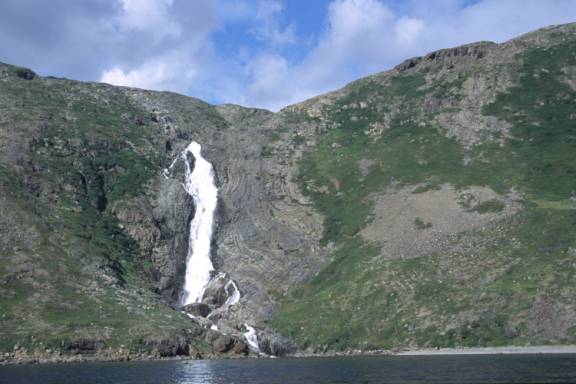
Early evening is my favourite time up here. The light casts enough shadow to define slopes and contours but does not bleach the detail from small things. Winds often diminish from annoying to moderate, strong enough to keep pesky mosquitoes away and even the black flies have calmed. A stillness seems to descend, but this is an illusion. The predator is just waking and the hunted quivers, hiding until day break. Dark night hours here can be a fearful time as my eyes see only as far as the yellow cast of a flashlight. But in early evening, I wander freely, naively, willingly, wildly. It’s an exhilarating time, with camera in hand, the culmination of another satisfying day.
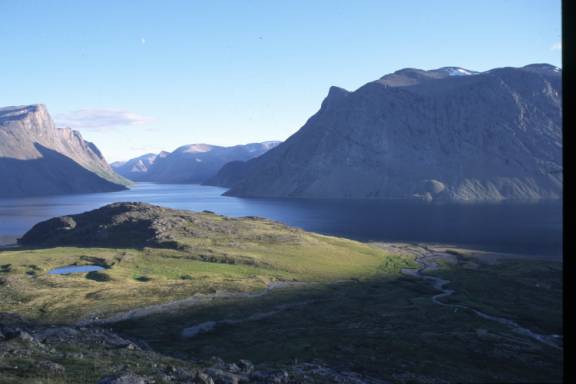
The skies start to lighten about 5am although the suns ray don’t hit the tent until a few hours later. With no shade, if the wind is light and temperature in the early teens, the tent quickly becomes too hot. Some mornings, I’m outside, roaming around just to escape the heat. Morning light, except for the first warming rays, seems to be more white and harsh compared to soft evening light. This perception, might be influenced the sharp bitter taste of a wake up espresso – perhaps jolting my body out of slumber too quickly. On the days where early morning sea fog creeps across glittering sunlight waters and the sky is deep blue, heavy lidded eyes flicker and smile.
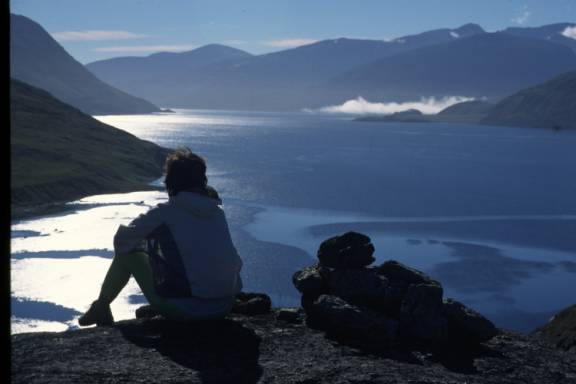
Weather conditions generally dictate the days activities. This is the luxury of a base camp with well stocked food barrels and no timetable. Grey overcast days under light winds are not very inspiring as a photographer but are preferable to driving rain at the freezing mark. Then, I stay inside the tent, buried deep in my sleeping bag, reading or writing. When the fog is thick and the temperatures low, there is little motivation to leave the cozy tent. Happily, dry weather seems to be the norm, wet weather never lasting longer than a day or two. The high winds which blow out the bad weather often result in dramatic lighting or interesting cloud formations, this change being often more interesting than a stable ‘Kodak moment’ blue sky.
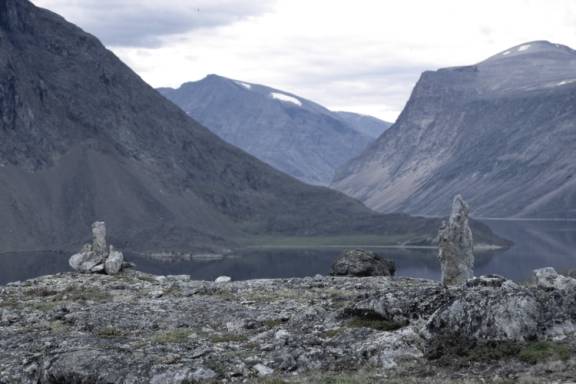
While wandering the hills and along waters edge, the mark of past human activity and occupation is evident. Thankfully, it’s rare to find modern garbage washed up especially those ubiquitous plastic bottles which seem to litter beaches around the world. Aside from the occasional rusted shot gun cap with plastic bit, it seems pristine.
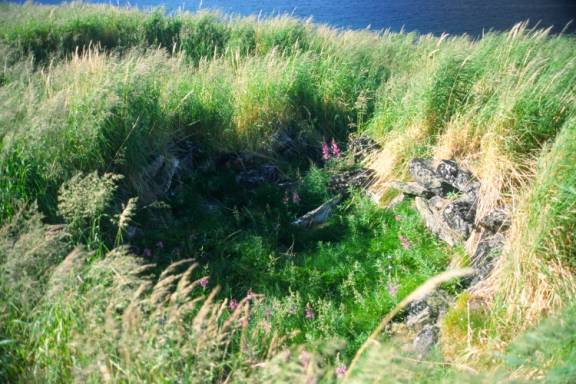
Close to the oceans edge, I look for collapsed pits of sod houses. Occasionally, whale bone vertebra, overgrown by grass, can be found. Flat cooking hearths indicate cooking areas often close to the shore. Stone tent rings range in size from ‘how could one person fit in there’ to huge family dwellings, pock mark depressions that line almost every fishable tributary and harbour. That well recognized iconographic symbol, the ‘inukshuk’, or stone marker, can be found high on the hill top or at the rims of valley, leaving an assortment of messages. At the old Hudson’s Bay Company site, a mound of stones mark a more recent grave. The thrill is to find, imagine, speculate and photograph ‘in situ’. Removing or disturbing some ancient thing, grown into the ground, weathered, worn and knacked, that has achieved balance and is now at rest, is bad karma.
